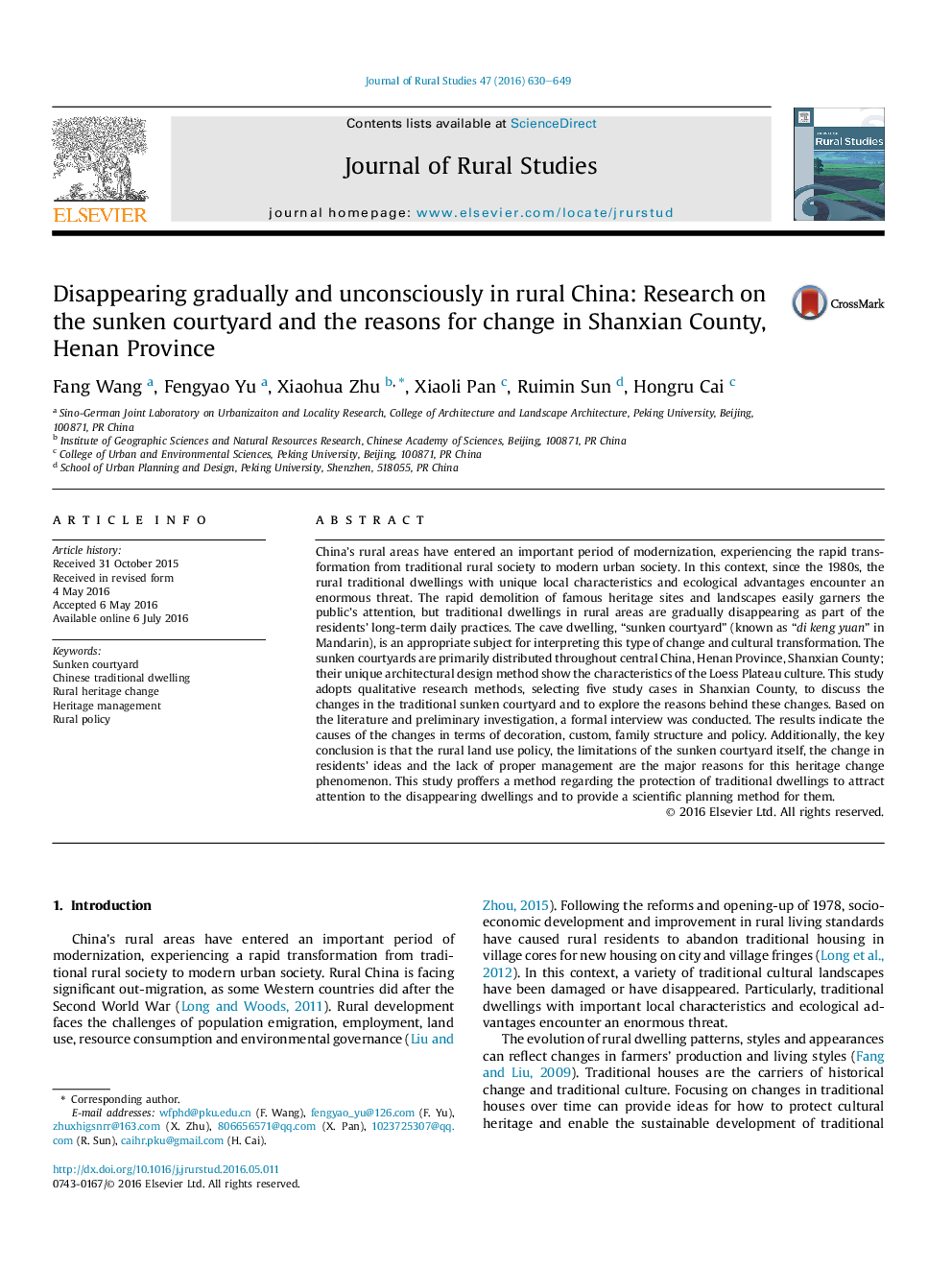| Article ID | Journal | Published Year | Pages | File Type |
|---|---|---|---|---|
| 6460191 | Journal of Rural Studies | 2016 | 20 Pages |
â¢Analyze the gradual and unconscious disappearance of the sunken courtyards in China.â¢Examine changed and stabilized factors from material and folk cultural dimensions.â¢The change reasons involve the limitations of heritage, ideas, management and policy.
China's rural areas have entered an important period of modernization, experiencing the rapid transformation from traditional rural society to modern urban society. In this context, since the 1980s, the rural traditional dwellings with unique local characteristics and ecological advantages encounter an enormous threat. The rapid demolition of famous heritage sites and landscapes easily garners the public's attention, but traditional dwellings in rural areas are gradually disappearing as part of the residents' long-term daily practices. The cave dwelling, “sunken courtyard” (known as “di keng yuan” in Mandarin), is an appropriate subject for interpreting this type of change and cultural transformation. The sunken courtyards are primarily distributed throughout central China, Henan Province, Shanxian County; their unique architectural design method show the characteristics of the Loess Plateau culture. This study adopts qualitative research methods, selecting five study cases in Shanxian County, to discuss the changes in the traditional sunken courtyard and to explore the reasons behind these changes. Based on the literature and preliminary investigation, a formal interview was conducted. The results indicate the causes of the changes in terms of decoration, custom, family structure and policy. Additionally, the key conclusion is that the rural land use policy, the limitations of the sunken courtyard itself, the change in residents' ideas and the lack of proper management are the major reasons for this heritage change phenomenon. This study proffers a method regarding the protection of traditional dwellings to attract attention to the disappearing dwellings and to provide a scientific planning method for them.
